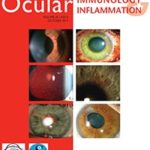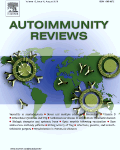
Biothérapies au cours des atteintes oculaires inflammatoires : Interferons, immunoglobulines, anticorps monoclonaux
Informations
Saadoun D, Bodaghi B, Bienvenu B, Wechsler B, Sene D, Trad S, Abad S, Cacoub P, Kodjikian L, Sève P
Autoimmun Rev. 2013 May;12(7):774-83
Résumé
Source
Service de Médecine Interne, AP-HP, Groupe Hospitalier Pitié-Salpétrière, Centre de référence des maladies autoimmunes rares, Université Pierre et Marie Curie, Paris VI, UMR CNRS 7211, INSERM U959, Groupe Hospitalier Pitié-Salpétrière Paris, F-75013 France.
Pour en savoir plus ou pour obtenir le pdf de l’article, contacter le CMIO ou david.saadoun@psl.aphp.fr

Uvéites et biothérapies
Informations
Feurer E, Bielefeld P, Saadoun D, Sève P
La Revue de Médecine Interne
Volume 36, Issue 2, February 2015, Pages 107–116
Résumé
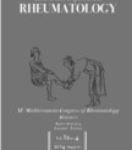
Tocilizumab in severe and refractory non-infectious uveitis
Informations
Papo M, Bielefeld P, Vallet H, Seve P, Wechsler B, Cacoub P, Le Hoang P, Papo T, Bodaghi B, Saadoun D
Clin Exp Rheumatol
2014 Jul-Aug;32(4 Suppl 84):S75-9. Epub 2014 Sep 30.
Objectives
To report the safety and efficacy of tocilizumab in patients with severe and refractory non-infectious uveitis.
Methods
Eight consecutive unselected patients with severe and refractory non-infectious uveitis[Birdshot chorioretinopathy (n=1), Behçet’s disease (n=1) and idiopathic bilateral panuveitis (n=6)] treated with tocilizumab (8mg/kg every 4 weeks intravenously) were included. The primary outcome was the response to treatment, defined by decrease of inflammatory ocular signs.
Results
Four (50%) patients were of female gender and the median (IQR) age was 41 (31-47) years. The median number of previous immunosupressants was of 5.5 (4-6.7). Seven patients had been previously treated with anti-TNF-α [infliximab (n=5) and adalimumab (n=2)]. The immunosupressive drugs used in association with tocilizumab were azathioprine (n=2), mycophenolate mofetil (n=2) and methotrexate (n=2). After a median follow-up of 8 months (6-25), 6/8 (75%) improved under tocilizumab and 2 (25%) were non-responders. The visual acuity improved in five patients. The median dose of prednisolone decreased from 16mg/day (10.6-20.5) to 10 mg/day (10-13.7), at baseline and at the end of follow-up, respectively. Tolerance of tocilizumab was satisfactory and side effects included bronchitis (n=1) and grade 1 leukopenia (n=1) and thrombocytopenia (n=1).
Conclusions
Tocilizumab seems to be a safe and promising therapy in severe and refractory non-infectious uveitis.
Pour obtenir la version PDF, contacter david.saadoun@psl.aphp.fr ou le CMIO.
Infliximab Versus Adalimumab in the Treatment of Refractory Inflammatory Uveitis: A Multicenter Study From the French Uveitis Network
Informations
Vallet H, Seve P, Biard L, Baptiste Fraison J, Bielefeld P, Perard L, Bienvenu B, Abad S, Rigolet A, Deroux A, Sene D, Perlat A, Marie I, Feurer E, Hachulla E, Fain O, Clavel G, Riviere S, Bouche PA, Gueudry J, Pugnet G, Le Hoang P, Resche Rigon M, Cacoub P, Bodaghi B, Saadoun D;
Arthritis and Rheumatology 2016 Volume 68, Issue 6, 1522–1530
Objective
To analyze the factors associated with response to anti-tumor necrosis factor (anti-TNF) treatment and compare the efficacy and safety of infliximab (IFX) and adalimumab (ADA) in patients with refractory noninfectious uveitis.
Methods
This was a multicenter observational study of 160 patients (39% men and 61% women; median age 31 years [interquartile range 21-42]) with uveitis that had been refractory to other therapies, who were treated with anti-TNF (IFX 5 mg/kg at weeks 0, 2, 6, and then every 5-6 weeks [n = 98] or ADA 40 mg every 2 weeks [n = 62]). Factors associated with complete response were assessed by multivariate analysis. Efficacy and safety of IFX versus ADA were compared using a propensity score approach with baseline characteristics taken into account. Subdistribution hazard ratios (SHRs) and 95% confidence intervals (95% CIs) were calculated.
Results
The main etiologies of uveitis included Behçet’s disease (BD) (36%), juvenile idiopathic arthritis (22%), spondyloarthropathy (10%), and sarcoidosis (6%). The overall response rate at 6 and 12 months was 87% (26% with complete response) and 93% (28% with complete response), respectively. The median time to complete response was 2 months. In multivariate analysis, BD and occurrence of >5 uveitis flares before anti-TNF initiation were associated with complete response to anti-TNF (SHR 2.52 [95% CI 1.35-4.71], P = 0.004 and SHR 1.97 [95% CI 1.02-3.84], P = 0.045, respectively). Side effects were reported in 28% of patients, including serious adverse events in 13%. IFX and ADA did not differ significantly in terms of occurrence of complete response (SHR 0.65 [95% CI 0.25-1.71], P = 0.39), serious side effects (SHR 0.22 [95% CI 0.04-1.25], P = 0.089), or event-free survival (SHR 0.55 [95% CI 0.28-1.08], P = 0.083).
Conclusion
Anti-TNF treatment is highly effective in refractory inflammatory uveitis. BD is associated with increased odds of response. IFX and ADA appear to be equivalent in terms of efficacy.
Infliximab and Adalimumab in Uveitic Macular Edema
Lejoyeux R, Diwo E, Vallet H, Saadoun D, Tezenas du Montcel S, Bodaghi B, LeHoang P, Fardeau C.
Ocul Immunol Inflamm. 2018
26(7):991-996. doi: 10.1080/09273948.2018.1498110. Epub 2018 Aug 10.
(EN) Tocilizumab for the Management of Corticosteroid-Resistant Mild to Severe Graves Ophthalmopathy
Tocilizumab for the Management of Corticosteroid-Resistant Mild to Severe Graves’ Ophthalmopathy, a Report of Three Cases.
Informations
Maldiney T, Deschasse C, Bielefeld P
Ocul Immunol Inflamm.
2018 Nov 20:1-4. doi: 10.1080/09273948.2018.1545914.
Purpose
To discuss the use of tocilizumab in mild to severe Graves’ ophthalmopathy as corticosteroid-adjunctive therapy.
Method
Retrospective case reports.
Results
Three patients with corticosteroid-resistant or advanced diplopia-associated Graves’ ophthalmopathy were subsequently treated with monthly intravenous tocilizumab at a dose of 8 mg/kg. None reported a past or present history of dysthyroidism. The adjunction of interleukin-6-receptor monoclonal antibody treatment was associated with a significant improvement in ocular symptoms, notably diplopia and proptosis, and functional prognosis in all patients, with one relapse approximately two months after the end of the treatment.
Conclusion
These clinical reports confirm the relative efficacy and tolerability profile of intravenous tocilizumab in severe or corticosteroid-resistant Graves’ ophthalmopathy.
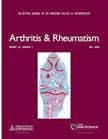
Infliximab Versus Adalimumab in the Treatment of Refractory Inflammatory Uveitis: A Multicenter Study From the French Uveitis Network
Informations
Vallet H, Seve P, Biard L
Arthritis Rheumatol
2016;68:1522–30. doi:10.1002/art.39667
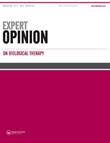
Expert opinion on the use of biological therapy in non-infectious uveitis
Informations
Touhami, S ; Diwo, E ; Sève, P ; Trad, S ; Bielefeld, P ; Sène, D & al
Expert Opin Biol Ther
2019, 19, 477-490

Biotherapies in Uveitis
Informations
Leclercq, M ; Desbois, AC ; Domont, F ; Maalouf, G ; Touhami, S ; Cacoub, P & Saadoun, D.
J Clin Med
2020, 9
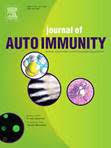
Evolving spectrum of drug-induced uveitis at the era of immune checkpoint inhibitors results from the WHO’s pharmacovigilance database
Informations
Anquetil, C ; Salem, JE ; Lebrun-Vignes, B ; Touhami, S ; Desbois, AC ; Maalouf, G & Saadoun, D
J Autoimmun
2020, 111, 102454
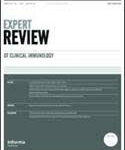
Perspectives for immunotherapy in noninfectious immune mediated uveitis
Informations
Touhami, S ; Gueudry, J ; Leclercq, M ; Touitou, V ; Ghembaza, A ; Errera, MH; Saadoun, D & al
Expert Rev Clin Immunol
2021, 17, 977-989

Lower Relapses Rate With Infliximab Versus Adalimumab in Sight-Threatening Uveitis: A Multicenter Study of 330 Patients
Informations
Maalouf, G ; Andrillon, A ; Leclercq, M ; Sève, P ; Bielefeld, P ; Gueudry, J & Saadoun, D
Am J Ophthalmol
2022, 238, 173-180
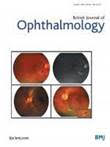
Anti-Tumor Necrosis Factor versus Tocilizumab in the Treatment of Refractory Uveitic Macular Edema: A Multicenter Study from the French Uveitis Network
Informations
Leclercq, M ; Andrillon, A ; Maalouf, G ; Sève, P ; Bielefeld, P ; Gueudry, J & Saadoun, D
Ophthalmology
2022, 129, 520-529

